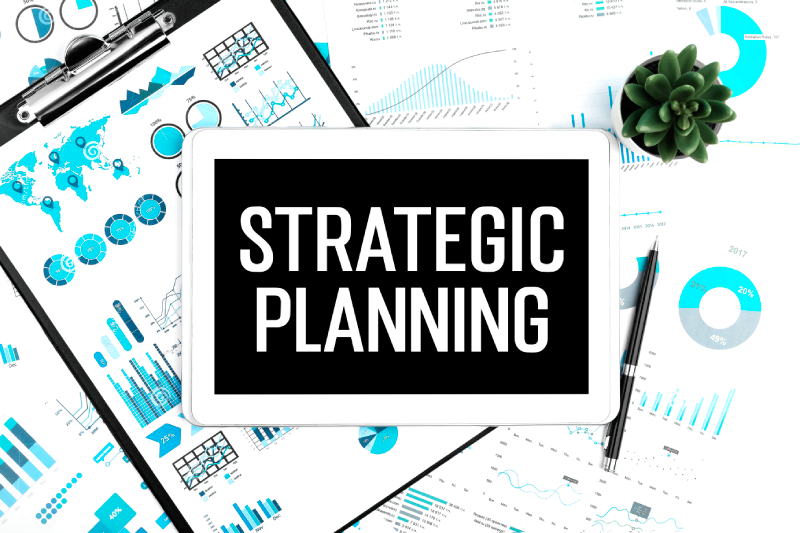Your website must directly support your business goals to be effective. A poorly planned site can undermine your venture; conversely, a strategic one drives significant growth.
Website planning isn’t about aesthetics or technology—it’s about translating business objectives into a results-driven digital strategy. Often, the critical error is skipping strategic website planning, which ensures every element serves a business purpose.
Therefore, a clear plan prevents costly mistakes by eliminating unnecessary revisions and keeping budgets intact.
This guide will walk you through a framework to build an effective website, starting with how to define your business goals for the web.
Align Your Website With Core Business Objectives
Understanding your website’s purpose and goals is the first and most crucial step in the website planning process—“What business problem does your website solve?”
Each business goal needs to translate into specific website objectives. For example, a business goal to “Increase sales by 30%” could become a website objective to “Capture 500 qualified leads per month with a contact form conversion rate of 8%.” This strategic discovery process is where you ask the hard questions that force clarity.
If a client says, “We want more traffic,” it’s vital to dig deeper to define what that traffic should achieve, such as generating leads or building brand authority.
- To cut through the noise, ask yourself: if your website could do just one thing, what would it be?
- Conduct a competitor analysis to understand what your competitors are doing, not to copy them, but to identify opportunities to stand out.
- Next, build detailed user personas to define your target audience and ensure the site is designed for them, not just your own preferences.
Ultimately, your website’s purpose will fall into a primary category, such as:
- Informational
- Commercial
- Lead Generation
- Portfolio or Showcase
- Community Building
Instead of abstract goals, set specific success metrics in numbers that will define your website objectives.
Once you have this strategic clarity, you can begin mapping the website’s structure to guide visitors toward achieving these goals.

Translate Strategy Into a Tangible Website Structure
With your business goals, audience insights, and competitive understanding in place, you can now create a strategic roadmap that bridges planning and execution. This foundational step ensures that every aspect of your website’s structure aligns directly with your core objectives, setting the stage for tangible results.
- A sitemap is like a blueprint for your website, providing a visual representation of its structure and outlining the page hierarchy and how all pages are interconnected. By building a sitemap, you make sure that every necessary page is accounted for before development begins, preventing costly omissions and ensuring a cohesive user journey.
- While sitemaps help you define the website’s architecture, wireframes and prototypes enable you to visualize its layout and user flow. This is where you map out the user flow, defining the optimal path a visitor takes to reach a conversion goal, transforming abstract strategies into clear, actionable visuals.
- A content strategy is the next crucial step in the website planning process.
- This involves planning, organizing, and producing all the content for your website, ensuring that each piece resonates with specific audience segments and addresses their unique problems and needs.
- To maximize effectiveness, ensure each page has a clear goal and leads people to the next step with a direct call-to-action. Moreover, keep one primary idea or message on each page to avoid confusion and maintain focus, guiding visitors seamlessly toward your objectives.
- A well-organized content strategy not only enhances the user experience but also provides a strong foundation for search engine optimization (SEO), boosting your site’s visibility.
- Finally, break down your content into digestible chunks to make it easier for visitors to scan and find relevant information quickly.
With this comprehensive structural and content blueprint established, you are ready to make informed technical decisions and plan for the website’s long-term growth and success.
Define Your Technical and Post-Launch Strategy
Only now do you determine the technical features and design elements needed—not for aesthetics, but to serve the strategic objectives you’ve defined in your website planning. This involves selecting the right platform and hosting based on ease of use, scalability, and budget, ensuring they support your current needs and future growth.
However, a website launch is only the beginning of the journey—a costly mistake to think otherwise. Therefore, a post-launch strategy is essential to keep your website effective and drive long-term business growth.
- Monitor website analytics to track page views, bounce rates, and conversion rates against your defined success metrics.
- Regularly update content and refine your SEO strategy to keep the site active and improve rankings.
- Perform regular security updates and maintenance to protect your site from evolving threats.
Ultimately, this continuous analysis and refinement transform your website into a dynamic asset for long-term business growth, positioning it not as a one-time project but as a tool that continuously drives your business forward.
Also Read : Exploring AI as a Core Component of Digital Marketing Trends
Effective Website Planning Drives Lasting Growth
This is exactly why strategic website planning serves as your North Star, guiding every aspect of your online presence and ensuring it fuels long-term business growth. As a result, you save valuable time and resources because a structured approach prevents costly revisions and keeps your project efficiently on track.
Moreover, your website is continuously refined with ongoing monitoring and updates, maintaining its competitive edge and relevance in a dynamic digital landscape. At the heart of this strategy lies the ability to deliver tangible business impact, transforming curious visitors into loyal customers and driving sustained success.
Ultimately, adopting this strategic mindset empowers you to build a website that consistently acts as a trusted driver of business growth.






